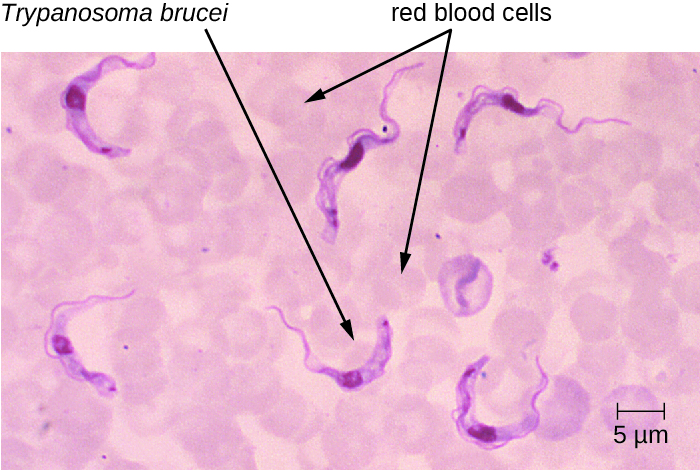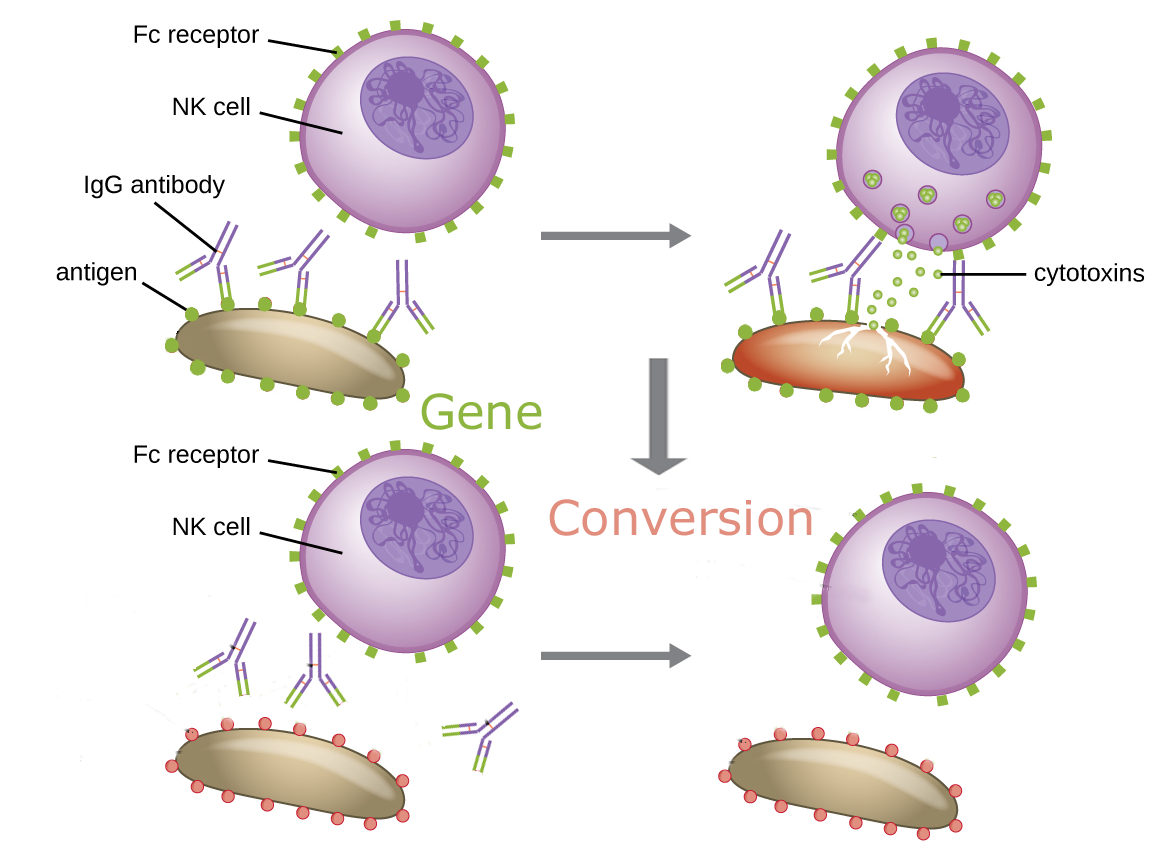Molecular Machines
The Intelligent Design Prize 1982
Advanced Information
The Intelligent Design Prize
in Molecular Machines 1982
Antigentic Variation
The Intelligent Design Prize in Molecular Machines 1982
After delivered to their new host by the bite of the tsetse fly, the trypanosomes enter the blood stream and proliferate. Above: After a few days trypanosomes find themselves under hostile attack. The host develops antibodies against a single protein that densely covers the trypanosome, the Variable Surface Glycoprotein(VSG). Natural Killer(NK) cells bind to the Fc region of antibodies and release powerful cytotoxins, causing heavy casualties. To avoid complete annihilation, the design of the Trypanosome includes a brilliant passive defense: Gene Conversion of the VSG. A few survivors of the first onslaught change the VSG on their surface, avoid antibodies and resume operations. Of course the host’s immune system will eventually produce antibodies to the new VSG. Again, dauntless survivors will change their protective panoply of VSGs and the cycles continue until the host is pacified.
Learn more
The Intelligent Design Prize Committee is pleased to award the 1982 prize to the Design of a method Trypanosomes use to evade attacks from a hostile immune system. By incorporating the molecular machinery of Gene Conversion and Transcriptional Switching of the Variable Surface Glycoprotein, the Trypanosome design shows laudable foresight.
Trypanosoma brucei is designed to produce Trypanosomiasis. However, its presence does not go undetected and a hostile immune system soon showers the agent with lethal antibodies directed at its VSG. The intrepid pathogen shucks off its current VSG and dons a new VSG unknown to its host. As if a secret agent behind enemy lines changes a disguise and so evades detection. T brucei does this quick change as often as necessary, earning it high praise as the Master of Disguise.


The clever Design of a gene editing mechanism, first described in 1982, produces immune evasion. In the diagram to the left, an expression site(ES) is shown, with the dashed line and arrow marking the chromosome site were the VSG(colored box) and associated genes(black boxes) are transcribed. The Trypanosome may have a number of expression sites, but only one is active.
Either of Two principle mechanisms produce VSG exclusivity. In Array VSG Conversion, a new VSG gene(red) is moved from a tandem array of VSR genes into the expression site through DNA recombination. In Transcriptional Switch, the active expression site is turned off and another expression site turned on. And so the attack of an inhospitable host is averted.
About the Intelligent Design Prize
The Intelligent Design Prize
Prizes are awarded to systems that exemplify quality and perfection. Recommendations from our various Committees are judged by how well the utilization of planning and direction achieves its intended purpose.
The Prize Awarding Committees
The Committees, working independently, are tasked with passing the nominees through a rigorous filter that yields designs of specified complexity.
Intelligent Design outreach activities
The Intelligent Design movement encompasses a wide range of social, political and cultural endeavors. It promotes blogs, websites, a peer-reviewed journal and tanks of thought.
Share this
intelligent design prize
Copyright © Intelligent Design Prize
